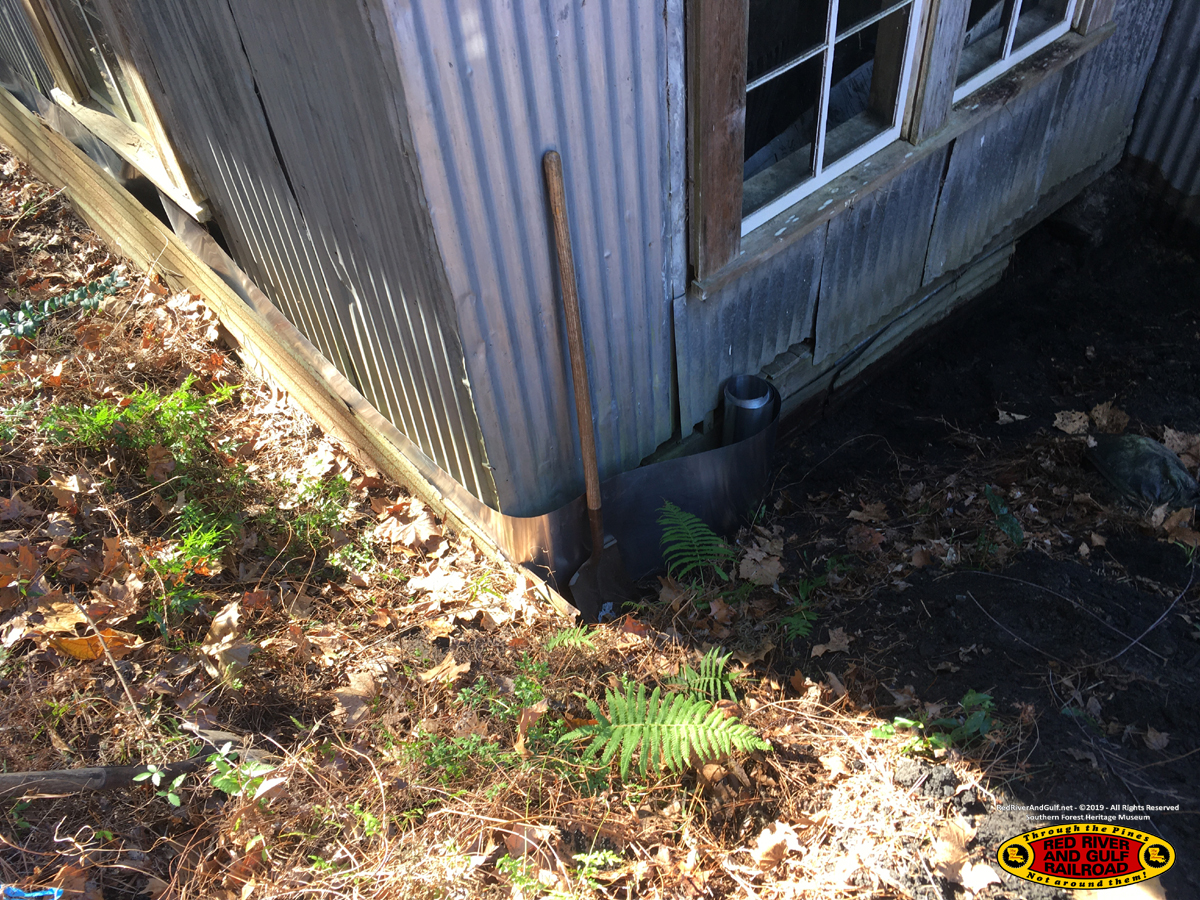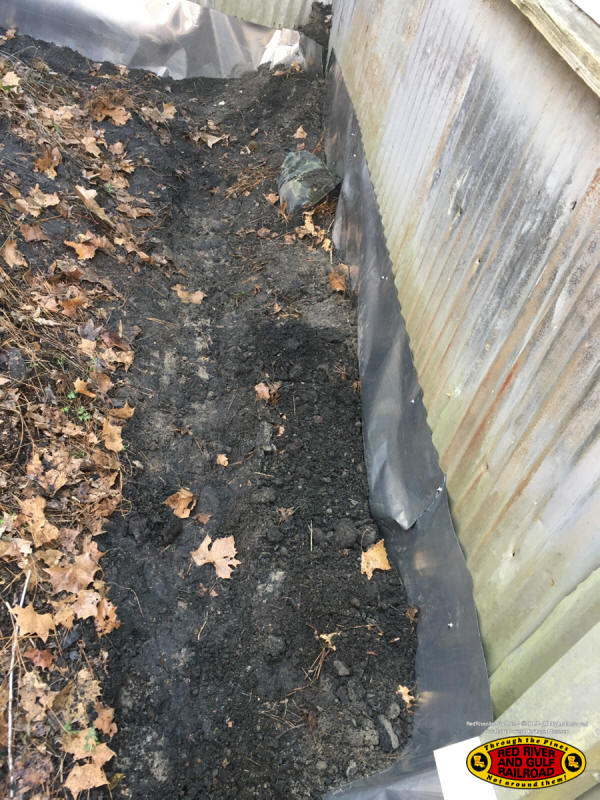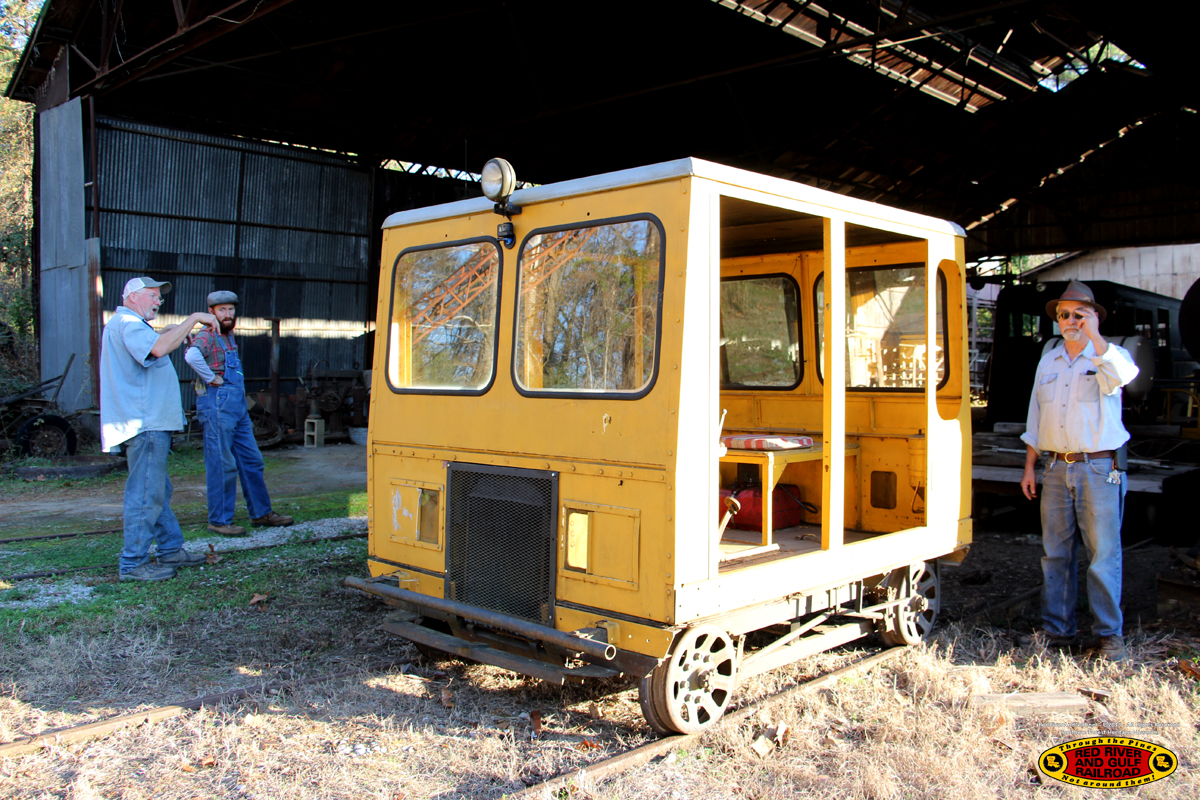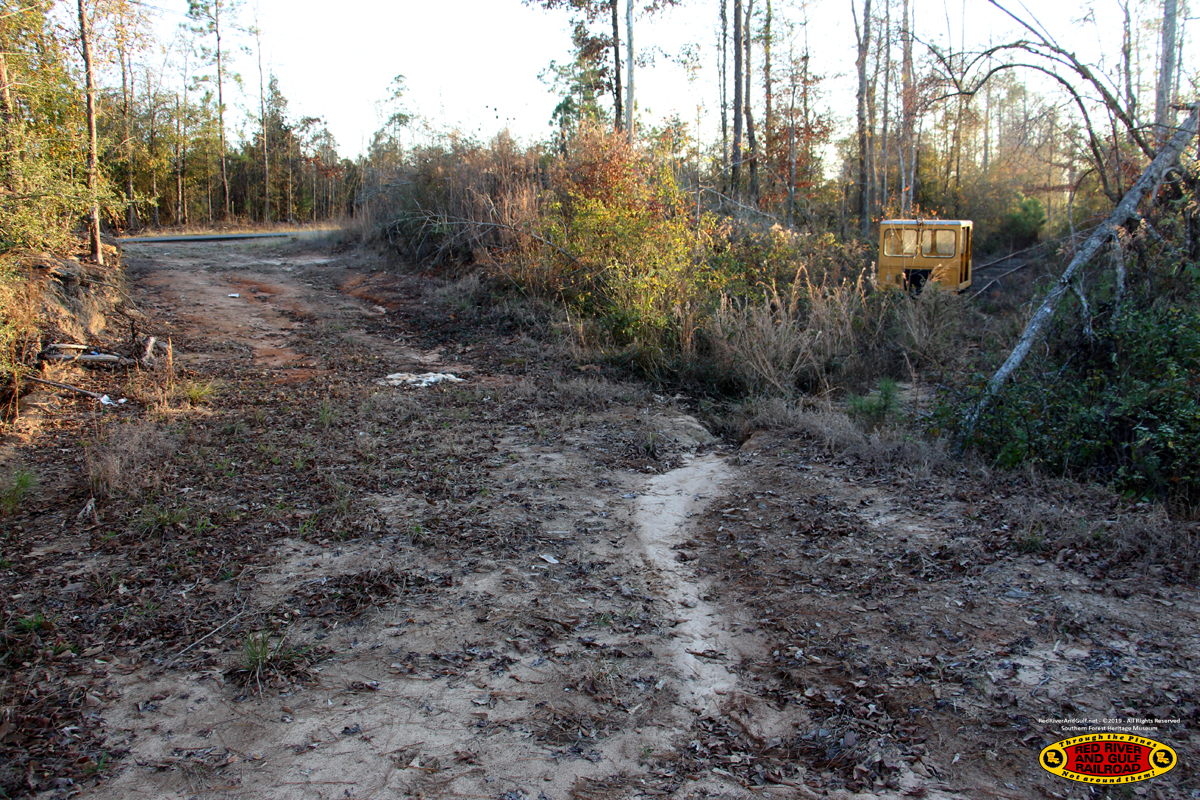|
|
|
Work Session December 14-15, 2019
To join the fun, contact the railroad at: WorkSession @ RedRiverAndGulf.net (no spaces)
|
|
Team: Accomplishments: - sheet metal placed behind machine shop foreman's office to prevent leaks/drainage of water into the machine shop - north wall ditch re dug and drain pipes cleaned out of mud and debris - water was run through the newly cleaned out drainage system for testing and to further clean out the drains - large beams of channel iron removed from machine shop west wall piers to remove weight pushing down on the piers - Reset and re leveled a tilting concrete pier supporting the machine shop west wall - removed rotten boards from the pump house landing near the planer mill and brought to burn pile
Prior to the Weekend Mike Miller gets major credit and a fine tip of the hat for studying how to best fix the falling machine shop west wall and for clearing out the area so the work site was accessible. Prior to this weekend, Mike fashioned a rolling cart to move out the steel log carriage sitting in the machine shop. Using the new forklift, he then moved it to the sawmill pad. He also moved McGiffert parts, wood, and other metal away from the work area on the wall piers. Mike also rolled engine 202 to find fortunately that it is not frozen in place. This means that the drainage problem and the wall support problems stabilized / under control for now, we are in position to stabilize engine 202 much like we did for engine 106. Excellent work and preparation Mike!
Saturday Debris and dirt was cleared away from the base of the machine shop foreman's office outside wall so that a roll of sheet metal could be placed on the very bottom to prevent water from running into the machine shop. The wall from the foreman's office to the wooden culvert received sheet metal and a new drainage path to the culvert was dug out/formed.
Next, the drain pipes and ditch on the machine shop north wall were dug out / cleaned out to allow for proper drainage. Using a 10 foot PVC pipe, a hose, and a boiler flue cleaning bit, the drain pipes were cleaned out of dirt and mud to allow for greater water drainage. Improved drainage around the shop will prevent water from building up on the back wall, which then drains into the shop itself.
Using the tractor and several chain links, several large 8 to 12ft lengths of channel iron were removed from the machine shop west wall to remove the weight of these irons pushing the concrete wall piers down. With the work site clear, work was begun to reset the most fallen-down wall pier. Mike's planning paid off mightily, as two hydraulic jacks, several large wooden blocks, and two 6 ft boards of metal were used to lift and stabilize the fallen wall. David then brought out the new forklift and with some shovel work, the concrete pier was freed from the dirt. After David used a cutting torch to remove the metal bracket affixing the pier to the wall beam, we dug out and re level the pier landing with shovels and a foundation of gravel. The new forklift under David's guidance placed the pier in its new, level, and sturdy positions. The forklift was again used to push the wall back into proper position over the pier and with Everett holding the level, Mike used chains and a racket pulley to pull the wall beam back into level position for perhaps the first time in years.
The rest of the afternoon was spent riding in the A4 motor car while relishing the machine shop wall now being stable. With the worst offender of the fallen in piers reset, the machine shop wall is now stable.
Sunday David, Everett, and I removed the rotten boards from the pump house landing near the Planer Mill and hauled them off to the burn pule using the tractor and trailer. The old landing was a safety hazard since anyone could very easily fall through the rotten boards.
Follow Up and Next Steps on these projects - Reset the other two fallen down piers on the machine shop west wall - Replace landing and steps at the pump house with new lumber and proper wood screws - Continue Machine shop clean up by removing rotten lumber lying about the floor and organizing / piling the scrap metal strewn about the shop
- outside ditches will need
regular maintenance by cleaning out drain pipes and deepening of drain
ditches |
|
|
|
Installing a sheet metal barrier to keep water out of the Machine Shop
|
|
|
|
Half-way there...
|
|
|
|
Done |
|
|
|
Everett screws the new sheet metal to the old.
|
|
It may not be pretty, but it's functional (like most of Long Leaf) and will prevent a lot of future water damage.
|
|
Restored drainage ditch along the front of the Machine Shop.
|
|
|
|
Testing our work.
|
|
|
|
Moving scrap metal off of the pedestal that supports the outer wall of the Machine Shop.
|
|
|
|
Mike installs hydraulic jacks to support the wall while we remove the pedestal.
|
|
|
|
|
|
Up she goes...
|
|
|
|
Dave uses the forklift to pull out the pedestal.
|
|
|
|
But first he had to cut off a brace.
|
|
|
|
Once the pedestal was out, we dug a level hole and loaded it with aggregate.
|
|
|
|
Dave puts the pedestal back in.
|
|
|
|
|
|
Looks dang good!
|
|
|
|
Next we cribbed it and lowered the wall.
|
|
|
|
DONE!
|
|
|
|
To end the day, we used RR&G M2 to tour the railroad so that Jason could get video footage for the website.
|
|
|
|
Video of the 3 segments of serviceable trackage: The Wye The Sandersville Branch The Loop
|
|
|
|
Tucker throws Switch #4 on the Wye
|
|
|
|
|
|
Tucker inspects the bridge on the west leg of the Wye.
|
|
|
|
Rebuilding this bridge is a future project. When it's done, all available trackage will be operational.
|
|
|
|
Current end-of-the-line near Sandersville.
|
|
|
|
|
|
One of two remaining intact (mostly) log cars from the original RR&G
|
|
|
|
Long-time member and contributor John Weiss passed away a few weeks before this Work Session. This brick was found outside the Machine Shop, near the McGiffert log loader, that John spent an enormous amount of time restoring. It was a placed on the McGiffert in tribute to John.
|
|
|
|
The brick rests at the lower left corner of the McGiffert.
|
|
|
|
Sunday: Working on the landing at the Pump House Office, near the Planer Mill.
|





























